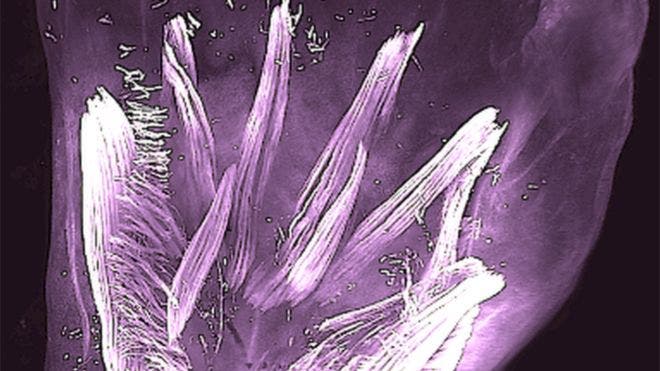
We might not have tails anymore, but our genomes still contain the genetic code for growing one. Each of us has an embryonic bony tail buried in our lower backs—the coccyx or tailbone—stunted by a loss of molecular signals that would otherwise cause it to grow out like an arm or leg.
Scientists call these features vestigial body parts — a vestige of our evolutionary heritage. That’s because evolution is not a straightforward process but rather a series of tweaks as beneficial mutations are promoted in populations only to become useless in later generations as the environment changes (other examples include wisdom teeth or the appendix).
Often, these vestigial structures performed some important function in the organism at one point in the past. However, as population structure changed due to natural selection, they’ve become increasingly unnecessary to the point they were rendered pretty much useless. When this happens, these features tend to disappear with passing generations — but sometimes they stay because they do no harm.
In other situations, vestigial body parts form during an organism’s early development, only to be discarded as the creature matures. In a striking new study, researchers have discovered nearly 30 such muscles in the legs and arms of developing human fetuses. By week 13 of gestation, a third of these muscles vanish or fuse together.
Some of these muscles, such as the dorsometacarpales, have been last seen in our adult ancestors over 250 million years ago, but they can still be found in lizards and salamanders today.
The muscles that turned all your digits into thumbs
In order to capture these embryonic developments for the very first time, researchers led by Dr. Rui Diogo from Howard University in the U.S. employed advanced 3D imaging techniques on 15 developing babies.
Sometimes, a child is born with a few extra finger and hand muscles, which may explain some of these fetal developments. However, a baby is never born with all the dosometacarpales that the biologists saw in their 3D scans.
It’s unclear why the body temporarily grows these limb muscles only to delete them at a later time, but the process has been described in unprecedented detail in this study.
Diogo says that our thumbs have a lot more muscles than other digits, which allows for very precise thumb movements. Perhaps our other digits also had more muscles but lost them because we didn’t need them as much — however, it’s not so easy to lose a feature once it’s been expressed by the genome.
The study is striking because it adds a new level of complexity to human development. It also raises important questions. What else are we missing, for instance? Biologists hope to answer this question, at least partly, by performing detailed scans of other body parts in the future.
The findings appeared in the journal Development.






